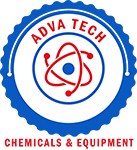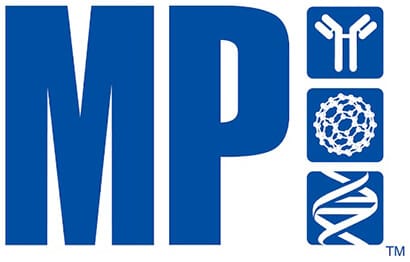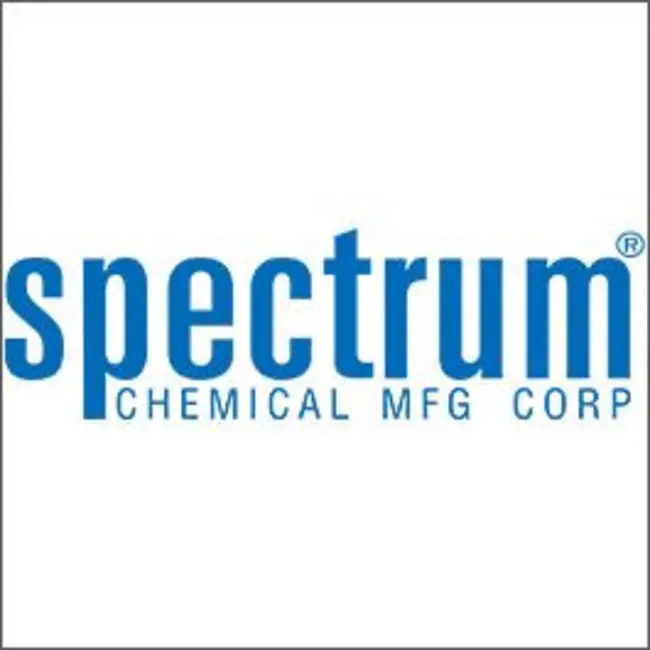GenScript Biotech
Showing 1201–1250 of 2554 results
-
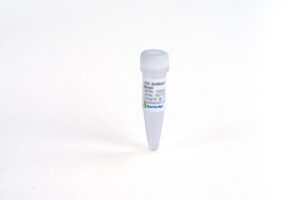
hsCRP (12D6), mAb, Mouse
$38.81 Add to cart View Product DetailsC-reactive protein (CRP) is synthesized in the liver by macrophage. Its level in blood increases when inflammation occurs. CRP serves as a useful marker for diagnosis of inflammation. High-sensitivity C-reactive protein (hsCRP), can serve as a risk marker for the diagnosis of myocardial infarction, ischemic stroke, peripheral vascular disease. Measuring hsCRP in blood is helpful to provide positive treatment of the disease.
-

hsCRP (12D6), mAb, Mouse
$388.13 Add to cart View Product DetailsC-reactive protein (CRP) is synthesized in the liver by macrophage. Its level in blood increases when inflammation occurs. CRP serves as a useful marker for diagnosis of inflammation. High-sensitivity C-reactive protein (hsCRP), can serve as a risk marker for the diagnosis of myocardial infarction, ischemic stroke, peripheral vascular disease. Measuring hsCRP in blood is helpful to provide positive treatment of the disease.
-

hsCRP (12D6), mAb, Mouse
$3,363.75 Add to cart View Product DetailsC-reactive protein (CRP) is synthesized in the liver by macrophage. Its level in blood increases when inflammation occurs. CRP serves as a useful marker for diagnosis of inflammation. High-sensitivity C-reactive protein (hsCRP), can serve as a risk marker for the diagnosis of myocardial infarction, ischemic stroke, peripheral vascular disease. Measuring hsCRP in blood is helpful to provide positive treatment of the disease.
-

Human IgE (RC13), mAb, Mouse
$100.05 Add to cart View Product DetailsIgE is a type of immunoglobulins produced by the immune system. It is composed of two heavy chains and two light chains, like Ig molecules. IgE plays an essential role in various allergic reactions. Its main function is immunity to parasites such as Schistosoma mansoni, Trichinella spiralis, and Fasciola hepatica. It also plays an important role in type I hypersensitivity. Total IgE is considered as a significant marker of allergic state.
-

Human IgE (RC13), mAb, Mouse
$1,000.50 Add to cart View Product DetailsIgE is a type of immunoglobulins produced by the immune system. It is composed of two heavy chains and two light chains, like Ig molecules. IgE plays an essential role in various allergic reactions. Its main function is immunity to parasites such as Schistosoma mansoni, Trichinella spiralis, and Fasciola hepatica. It also plays an important role in type I hypersensitivity. Total IgE is considered as a significant marker of allergic state.
-

Human IgE (RC13), mAb, Mouse
$8,538.75 Add to cart View Product DetailsIgE is a type of immunoglobulins produced by the immune system. It is composed of two heavy chains and two light chains, like Ig molecules. IgE plays an essential role in various allergic reactions. Its main function is immunity to parasites such as Schistosoma mansoni, Trichinella spiralis, and Fasciola hepatica. It also plays an important role in type I hypersensitivity. Total IgE is considered as a significant marker of allergic state.
-

Human IgE (RC7H), mAb, Mouse
$100.05 Add to cart View Product DetailsIgE is a type of immunoglobulins produced by the immune system. It is composed of two heavy chains and two light chains, like Ig molecules. IgE plays an essential role in various allergic reactions. Its main function is immunity to parasites such as Schistosoma mansoni, Trichinella spiralis, and Fasciola hepatica. It also plays an important role in type I hypersensitivity. Total IgE is considered as a significant marker of allergic state.
-

Human IgE (RC7H), mAb, Mouse
$1,000.50 Add to cart View Product DetailsIgE is a type of immunoglobulins produced by the immune system. It is composed of two heavy chains and two light chains, like Ig molecules. IgE plays an essential role in various allergic reactions. Its main function is immunity to parasites such as Schistosoma mansoni, Trichinella spiralis, and Fasciola hepatica. It also plays an important role in type I hypersensitivity. Total IgE is considered as a significant marker of allergic state.
-

Human IgE (RC7H), mAb, Mouse
$8,538.75 Add to cart View Product DetailsIgE is a type of immunoglobulins produced by the immune system. It is composed of two heavy chains and two light chains, like Ig molecules. IgE plays an essential role in various allergic reactions. Its main function is immunity to parasites such as Schistosoma mansoni, Trichinella spiralis, and Fasciola hepatica. It also plays an important role in type I hypersensitivity. Total IgE is considered as a significant marker of allergic state.
-
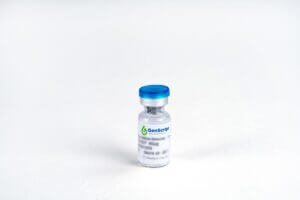
Human IgG (Fc) Antibody, mAb, Mouse
$90.56 Add to cart View Product DetailsGenScript Human IgG (Fc) Antibody, mAb, Mouse recognizes human IgG and human Fc-tagged proteins.
-

Human IL-8 ELISA Detection Kit
$326.03 Add to cart View Product DetailsDescription:
Interleukin-8 (IL-8), a member of a family of structurally related cytokines, is a neutrophil chemotactic cytokine that can signal
through the CXCR1 and CXCR2 receptor. It is proinflammatory and primarily mediates the activation and migration of neutrophils from
peripheral blood into the sites of inflammation, injury, or infection in the tissue. IL-8 is involved in a wide variety of
physiological and pathological processes, including host defense against bacterial infection, bronchiolitis, arteriosclerosis,
autoimmune disorders of skin, and angiogenesis-dependent disorders such as tumor growth, and wound repair. IL-8 is produced by
stimulated monocytes, leukocytic cells, non-leukocytic somatic cells and tumor cells.
GenScript Human IL-8 ELISA DetectionKit is a solid phase sandwich ELISA for quantitative measurement of human IL-8 in serum, plasma and cell culture supernates. It
utilizes a mouse anti-human IL-8 monoclonal antibody coated on 96-well plate as capture antibody. Standards and samples are
pipetted into the wells and the IL-8 present is bound by the immobilized antibody. After washing away any unbound substances,
another mouse anti-Human IL-8 monoclonal Antibody with HRP conjugation as detection antibody to specific bind human IL-8. After
washing again, TMB substrate solution is added and the color developed is proportional to the amount of IL-8 present in the testing
samples.
Key Features:
- Sensitivity: 2.8 pg/ml
- Large assay range: from 25 pg/ml to 1600 pg/ml
- Highly reproducible results
- Cost saving
- Time Saving Protocol: complete test in 2.5 hours:
Applications:
- Quantitate human IL-8 in cell culture supernates, plasma and serum
Storage:
- The unopened kit is stable for 12 months stored at 2-8°C.
- The opened kit may be stored for up to 1 month at 2-8°C.
- Use only before expiration date.
- Do not freeze the kit.
-

Human Kappa Light Chain (2F1C1), mAb, Mouse
$243.23 Add to cart View Product DetailsImmunoglobulins (Ig) and free light chains (FLC) is involved in humoral immune response. Ig is composed of two identical light chains and two identical heavy chains. FLC contains two types: kappa free light chain (KFLC) and lambda free light chain (LFLC). The expression of Kappa or Lambda is greatly increased in multiple myeloma or other B cell malignancies. It is useful for the identification of certain non-Hodgkin’s lymphomas, leukemias and plasmacytomas. Immunohistochemistry is commonly applied for the detection of free light chains.
-

Human Kappa Light Chain (2F1C1), mAb, Mouse
$326.89 Add to cart View Product DetailsImmunoglobulins (Ig) and free light chains (FLC) is involved in humoral immune response. Ig is composed of two identical light chains and two identical heavy chains. FLC contains two types: kappa free light chain (KFLC) and lambda free light chain (LFLC). The expression of Kappa or Lambda is greatly increased in multiple myeloma or other B cell malignancies. It is useful for the identification of certain non-Hodgkin’s lymphomas, leukemias and plasmacytomas. Immunohistochemistry is commonly applied for the detection of free light chains.
-

Human Kappa Light Chain (2F1C1), mAb, Mouse
$3,268.88 Add to cart View Product DetailsImmunoglobulins (Ig) and free light chains (FLC) is involved in humoral immune response. Ig is composed of two identical light chains and two identical heavy chains. FLC contains two types: kappa free light chain (KFLC) and lambda free light chain (LFLC). The expression of Kappa or Lambda is greatly increased in multiple myeloma or other B cell malignancies. It is useful for the identification of certain non-Hodgkin’s lymphomas, leukemias and plasmacytomas. Immunohistochemistry is commonly applied for the detection of free light chains.
-

Human Kappa Light Chain (2F1C1), mAb, Mouse
$27,772.50 Add to cart View Product DetailsImmunoglobulins (Ig) and free light chains (FLC) is involved in humoral immune response. Ig is composed of two identical light chains and two identical heavy chains. FLC contains two types: kappa free light chain (KFLC) and lambda free light chain (LFLC). The expression of Kappa or Lambda is greatly increased in multiple myeloma or other B cell malignancies. It is useful for the identification of certain non-Hodgkin’s lymphomas, leukemias and plasmacytomas. Immunohistochemistry is commonly applied for the detection of free light chains.
-

Human Lambda Light Chain (2D54), mAb, Mouse
$243.23 Add to cart View Product DetailsImmunoglobulins (Ig) and free light chains (FLC) is involved in humoral immune response. Ig is composed of two identical light chains and two identical heavy chains. FLC contains two types: kappa free light chain (KFLC) and lambda free light chain (LFLC). The expression of Kappa or Lambda is greatly increased in multiple myeloma or other B cell malignancies. It is useful for the identification of certain non-Hodgkin’s lymphomas, leukemias and plasmacytomas. Immunohistochemistry is commonly applied for the detection of free light chains.
-

Human Lambda Light Chain (2D54), mAb, Mouse
$326.89 Add to cart View Product DetailsImmunoglobulins (Ig) and free light chains (FLC) is involved in humoral immune response. Ig is composed of two identical light chains and two identical heavy chains. FLC contains two types: kappa free light chain (KFLC) and lambda free light chain (LFLC). The expression of Kappa or Lambda is greatly increased in multiple myeloma or other B cell malignancies. It is useful for the identification of certain non-Hodgkin’s lymphomas, leukemias and plasmacytomas. Immunohistochemistry is commonly applied for the detection of free light chains.
-

Human Lambda Light Chain (2D54), mAb, Mouse
$3,268.88 Add to cart View Product DetailsImmunoglobulins (Ig) and free light chains (FLC) is involved in humoral immune response. Ig is composed of two identical light chains and two identical heavy chains. FLC contains two types: kappa free light chain (KFLC) and lambda free light chain (LFLC). The expression of Kappa or Lambda is greatly increased in multiple myeloma or other B cell malignancies. It is useful for the identification of certain non-Hodgkin’s lymphomas, leukemias and plasmacytomas. Immunohistochemistry is commonly applied for the detection of free light chains.
-

Human Lambda Light Chain (2D54), mAb, Mouse
$27,772.50 Add to cart View Product DetailsImmunoglobulins (Ig) and free light chains (FLC) is involved in humoral immune response. Ig is composed of two identical light chains and two identical heavy chains. FLC contains two types: kappa free light chain (KFLC) and lambda free light chain (LFLC). The expression of Kappa or Lambda is greatly increased in multiple myeloma or other B cell malignancies. It is useful for the identification of certain non-Hodgkin’s lymphomas, leukemias and plasmacytomas. Immunohistochemistry is commonly applied for the detection of free light chains.
-

Human PD-1 Antibody (PD1.D3), mAb, Mouse
$97.46 Add to cart View Product DetailsThe product is specific for human PD-1 (UniProt Accession: Q15116). This antibody blocks human PD-L1 binding with human PD-1 expression cell line in flow cytometry assay.
-

Human PD-L1 Antibody (PDL1.D1), mAb, Mouse
$97.46 Add to cart View Product DetailsThe product is specific for human PD-L1 (UniProt Accession: Q9NZQZ). This antibody blocks human PD-1 binding with human PD-L1 expression cell line in flow cytometry assay.
-

Human TIGIT Antibody (20A9), mAb, Mouse
$97.46 Add to cart View Product DetailsThe product is specific for human TIGIT
-

Human β-Amyloid 1-42 Antibody (2C2G5), mAb, Mouse
$97.46 Add to cart View Product DetailsGenScript Human β-Amyloid 1-42 Antibody (2C2G5), mAb, Mouse detects human β-Amyloid 1-42 and does not cross-react with human β-Amyloid 1-40.
-
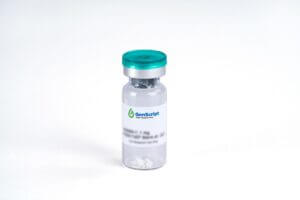
HVEM-Fc, Human
$439.88 Add to cart View Product DetailsHerpes Virus Entry Mediator (HVEM) is a transmembrane protein that is the receptor for TNFSF14 (also known as LIGHT) and is therefore referred to asTNFRSF14. HVEM is expressed broadly on immune cells such as T cells, natural killer (NK) cells and monocytes. The interaction of 3 molecules of LIGHT with three molecules of HVEM forms a hexameric complex that leads to the recruitment and retention of effector cells and activates NK cells to produce large amounts of IFN-γ and GM-CSF. In addition to the canonical binding partner LIGHT, HVEM can also bind to the inhibitory signaling protein, B- and T- lymphocyte attenuator (BTLA), which suppresses immune responses. Therefore, the HVEM network plays an important role in regulating immunity and the behavior of lymphocytes.
-
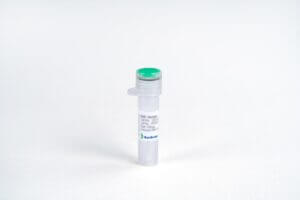
HVEM-Fc, Human
$51.75 Add to cart View Product DetailsHerpes Virus Entry Mediator (HVEM) is a transmembrane protein that is the receptor for TNFSF14 (also known as LIGHT) and is therefore referred to asTNFRSF14. HVEM is expressed broadly on immune cells such as T cells, natural killer (NK) cells and monocytes. The interaction of 3 molecules of LIGHT with three molecules of HVEM forms a hexameric complex that leads to the recruitment and retention of effector cells and activates NK cells to produce large amounts of IFN-γ and GM-CSF. In addition to the canonical binding partner LIGHT, HVEM can also bind to the inhibitory signaling protein, B- and T- lymphocyte attenuator (BTLA), which suppresses immune responses. Therefore, the HVEM network plays an important role in regulating immunity and the behavior of lymphocytes.
-
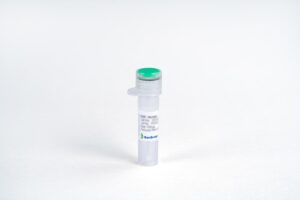
ICOS Fc Chimera, Human
$301.88 Add to cart View Product DetailsInducible T-cell costimulator is an immune checkpoint protein that in humans is encoded by the ICOS gene. CD278 or ICOS (Inducible T-cell COStimulator) is a CD28-superfamily costimulatory molecule that is expressed on activated T cells. It is thought to be important for Th2 cells in particular. The protein encoded by this gene belongs to the CD28 and CTLA-4 cell-surface receptor family. It forms homodimers and plays an important role in cell-cell signaling, immune responses and regulation of cell proliferation.
-

ICOS Fc Chimera, Human
$189.75 Add to cart View Product DetailsInducible T-cell costimulator is an immune checkpoint protein that in humans is encoded by the ICOS gene. CD278 or ICOS (Inducible T-cell COStimulator) is a CD28-superfamily costimulatory molecule that is expressed on activated T cells. It is thought to be important for Th2 cells in particular. The protein encoded by this gene belongs to the CD28 and CTLA-4 cell-surface receptor family. It forms homodimers and plays an important role in cell-cell signaling, immune responses and regulation of cell proliferation.
-

iFluor488-Protein L
$174.23 Add to cart View Product DetailsProtein L is a cell surface protein from Peptostreptoccocus magnus that binds to the variable light chains (kappa chain) of immunoglobulins without interfering with antigen binding. In contrast to IgG-binding proteins, such as protein A and protein G, which bind to the Fc region of immunoglobulins, protein L can be used for the detection and purification of mammalian kappa light chain antibodies of all classes. Since no part of the heavy chain is involved in the binding interaction, Protein L binds a wider range of antibody classes than Protein A or G. Protein L binds to representatives of all antibody classes, including IgG, IgM, IgA, IgE and IgD. Single chain variable fragments (scFv) and Fab fragments also bind to Protein L.
-

iFluor488-Protein L
$129.38 Add to cart View Product DetailsProtein L is a cell surface protein from Peptostreptoccocus magnus that binds to the variable light chains (kappa chain) of immunoglobulins without interfering with antigen binding. In contrast to IgG-binding proteins, such as protein A and protein G, which bind to the Fc region of immunoglobulins, protein L can be used for the detection and purification of mammalian kappa light chain antibodies of all classes. Since no part of the heavy chain is involved in the binding interaction, Protein L binds a wider range of antibody classes than Protein A or G. Protein L binds to representatives of all antibody classes, including IgG, IgM, IgA, IgE and IgD. Single chain variable fragments (scFv) and Fab fragments also bind to Protein L.
-

iFluor647-Protein L
$174.23 Add to cart View Product DetailsProtein L is a cell surface protein from Peptostreptoccocus magnus that binds to the variable light chains (kappa chain) of immunoglobulins without interfering with antigen binding. In contrast to IgG-binding proteins, such as protein A and protein G, which bind to the Fc region of immunoglobulins, protein L can be used for the detection and purification of mammalian kappa light chain antibodies of all classes. Since no part of the heavy chain is involved in the binding interaction, Protein L binds a wider range of antibody classes than Protein A or G. Protein L binds to representatives of all antibody classes, including IgG, IgM, IgA, IgE and IgD. Single chain variable fragments (scFv) and Fab fragments also bind to Protein L.
-

iFluor647-Protein L
$129.38 Add to cart View Product DetailsProtein L is a cell surface protein from Peptostreptoccocus magnus that binds to the variable light chains (kappa chain) of immunoglobulins without interfering with antigen binding. In contrast to IgG-binding proteins, such as protein A and protein G, which bind to the Fc region of immunoglobulins, protein L can be used for the detection and purification of mammalian kappa light chain antibodies of all classes. Since no part of the heavy chain is involved in the binding interaction, Protein L binds a wider range of antibody classes than Protein A or G. Protein L binds to representatives of all antibody classes, including IgG, IgM, IgA, IgE and IgD. Single chain variable fragments (scFv) and Fab fragments also bind to Protein L.
-

IFN-α 1b, Human
$133.69 Add to cart View Product DetailsAt least 23 different variants of IFN-alpha are known. The individual proteins have molecular masses between 19-26 kDa and consist of proteins with lengths of 156-166 and 172 amino acids. All IFN-alpha subtypes possess a common conserved sequence region between amino acid positions 115-151 while the amino-terminal ends are variable. Many IFN-alpha subtypes differ in their sequences at only one or two positions. Naturally occurring variants also include proteins truncated by 10 amino acids at the carboxy-terminal end.
-

IFN-α 1b, Human
$63.83 Add to cart View Product DetailsAt least 23 different variants of IFN-alpha are known. The individual proteins have molecular masses between 19-26 kDa and consist of proteins with lengths of 156-166 and 172 amino acids. All IFN-alpha subtypes possess a common conserved sequence region between amino acid positions 115-151 while the amino-terminal ends are variable. Many IFN-alpha subtypes differ in their sequences at only one or two positions. Naturally occurring variants also include proteins truncated by 10 amino acids at the carboxy-terminal end.
-

IFN-α 2a, Human
$405.38 Add to cart View Product DetailsInterferon-Alpha 2a (IFN-Alpha 2a), Human produced by leukocytes is a member of Interferon family. IFN-alpha is mainly involved in innate immune response against a broad range of viral infections. IFN-alpha 2 has three acid stable forms (a,b,c) signaling through IFNAR2. IFN-alpha 2a shares 99.4% , 98.8% aa sequence identity with IFN-alpha 2b and 2c respectively. IFN-alpha contains four highly conserved cysteine residues which form two disulfide bonds, one of which is necessary for biological activity.
-

IFN-α 2a, Human
$36.23 Add to cart View Product DetailsInterferon-Alpha 2a (IFN-Alpha 2a), Human produced by leukocytes is a member of Interferon family. IFN-alpha is mainly involved in innate immune response against a broad range of viral infections. IFN-alpha 2 has three acid stable forms (a,b,c) signaling through IFNAR2. IFN-alpha 2a shares 99.4% , 98.8% aa sequence identity with IFN-alpha 2b and 2c respectively. IFN-alpha contains four highly conserved cysteine residues which form two disulfide bonds, one of which is necessary for biological activity.
-

IFN-α 2a, Human
$68.14 Add to cart View Product DetailsInterferon-Alpha 2a (IFN-Alpha 2a), Human produced by leukocytes is a member of Interferon family. IFN-alpha is mainly involved in innate immune response against a broad range of viral infections. IFN-alpha 2 has three acid stable forms (a,b,c) signaling through IFNAR2. IFN-alpha 2a shares 99.4% , 98.8% aa sequence identity with IFN-alpha 2b and 2c respectively. IFN-alpha contains four highly conserved cysteine residues which form two disulfide bonds, one of which is necessary for biological activity.
-

IFN-α 2b, Human
$931.50 Add to cart View Product DetailsInterferon-Alpha 2b (IFN-Alpha 2b) produced by leukocytes is a member of Interferon family. IFN-alpha is mainly involved in innate immune response against a broad range of viral infections. IFN-alpha 2 has three acid stable forms (a,b,c) signaling through IFNAR2. IFN-alpha 2b shares 99.4% aa sequence identity with both IFN-alpha 2a and 2c. IFN-alpha contains four highly conserved cysteine residues which form two disulfide bonds, one of which is necessary for biological activity.
-

IFN-α 2b, Human
$34.50 Add to cart View Product DetailsInterferon-Alpha 2b (IFN-Alpha 2b) produced by leukocytes is a member of Interferon family. IFN-alpha is mainly involved in innate immune response against a broad range of viral infections. IFN-alpha 2 has three acid stable forms (a,b,c) signaling through IFNAR2. IFN-alpha 2b shares 99.4% aa sequence identity with both IFN-alpha 2a and 2c. IFN-alpha contains four highly conserved cysteine residues which form two disulfide bonds, one of which is necessary for biological activity.
-

IFN-α 2b, Human
$86.25 Add to cart View Product DetailsInterferon-Alpha 2b (IFN-Alpha 2b) produced by leukocytes is a member of Interferon family. IFN-alpha is mainly involved in innate immune response against a broad range of viral infections. IFN-alpha 2 has three acid stable forms (a,b,c) signaling through IFNAR2. IFN-alpha 2b shares 99.4% aa sequence identity with both IFN-alpha 2a and 2c. IFN-alpha contains four highly conserved cysteine residues which form two disulfide bonds, one of which is necessary for biological activity.
-

IFN-β, Human
$99.19 Add to cart View Product DetailsInterferon-beta (IFN-β), acting via STAT1 and STAT2, is known to upregulate and downregulate a wide variety of genes, most of which are involved in the antiviral immune response. It is a member of Type I IFNs, which include IFN-α, -β, τ, and –ω. IFN-β plays an important role in inducing non-specific resistance against a broad range of viral infections. It also affects cell proliferation and modulates immune responses.
-

IFN-β, Human
$43.13 Add to cart View Product DetailsInterferon-beta (IFN-β), acting via STAT1 and STAT2, is known to upregulate and downregulate a wide variety of genes, most of which are involved in the antiviral immune response. It is a member of Type I IFNs, which include IFN-α, -β, τ, and –ω. IFN-β plays an important role in inducing non-specific resistance against a broad range of viral infections. It also affects cell proliferation and modulates immune responses.
-

IFN-γ R II, Human
$63.83 Add to cart View Product DetailsIFN-gamma Receptor II, also known as IFNGR2 and IFNGT1, is a transmembrane protein belonging to the type II cytokine receptor family. IFNGR2 is a non-ligand-binding beta chain of the IFN-gamma receptor. It is an integral part of the IFN-gamma signaling transduction pathway and is likely to interact with GAF, JAK1 and JAK2. Defects in IFNGR2 are a cause of autosomal recessive Mendelian susceptibility to mycobacterial disease (MSMD), also known as familial disseminated atypical mycobacterial infection.
-

IFN-γ R II, Human
$133.69 Add to cart View Product DetailsIFN-gamma Receptor II, also known as IFNGR2 and IFNGT1, is a transmembrane protein belonging to the type II cytokine receptor family. IFNGR2 is a non-ligand-binding beta chain of the IFN-gamma receptor. It is an integral part of the IFN-gamma signaling transduction pathway and is likely to interact with GAF, JAK1 and JAK2. Defects in IFNGR2 are a cause of autosomal recessive Mendelian susceptibility to mycobacterial disease (MSMD), also known as familial disseminated atypical mycobacterial infection.
-

IFN-γ, Human
$487.31 Add to cart View Product DetailsHuman Interferon gamma (hIFN-γ) is amacrophage‐activating factor and the lone member of Interferon type II.The active form of IFN-γ is an antiparallel dimer that interacts with the receptor IFN-γR1 and sets off IFN-γ/JAK/STAT pathway. IFN-γ signaling does diverse biological functions primarily related to host defense and immune regulation, including antiviral and antibacterial defense, apoptosis, inflammation, and innate and acquired immunity. While IFN-γ–induced inflammatory cascade summons a variety of immune‐related cell types, such as macrophages, natural killer (NK) cells and cytotoxic T lymphocytes (CTLs), IFN-γ is also implicated in resistance to NK cell and CTL responses and in immune escape in a variety of cancers.
-

IFN-γ, Human
$34.50 Add to cart View Product DetailsHuman Interferon gamma (hIFN-γ) is amacrophage‐activating factor and the lone member of Interferon type II.The active form of IFN-γ is an antiparallel dimer that interacts with the receptor IFN-γR1 and sets off IFN-γ/JAK/STAT pathway. IFN-γ signaling does diverse biological functions primarily related to host defense and immune regulation, including antiviral and antibacterial defense, apoptosis, inflammation, and innate and acquired immunity. While IFN-γ–induced inflammatory cascade summons a variety of immune‐related cell types, such as macrophages, natural killer (NK) cells and cytotoxic T lymphocytes (CTLs), IFN-γ is also implicated in resistance to NK cell and CTL responses and in immune escape in a variety of cancers.
-

IFN-γ, Human
$99.19 Add to cart View Product DetailsHuman Interferon gamma (hIFN-γ) is amacrophage‐activating factor and the lone member of Interferon type II.The active form of IFN-γ is an antiparallel dimer that interacts with the receptor IFN-γR1 and sets off IFN-γ/JAK/STAT pathway. IFN-γ signaling does diverse biological functions primarily related to host defense and immune regulation, including antiviral and antibacterial defense, apoptosis, inflammation, and innate and acquired immunity. While IFN-γ–induced inflammatory cascade summons a variety of immune‐related cell types, such as macrophages, natural killer (NK) cells and cytotoxic T lymphocytes (CTLs), IFN-γ is also implicated in resistance to NK cell and CTL responses and in immune escape in a variety of cancers.
-

IFN-γ, Human
$72.45 Add to cart View Product DetailsHuman Interferon gamma (hIFN-γ) is amacrophage‐activating factor and the lone member of Interferon type II.The active form of IFN-γ is an antiparallel dimer that interacts with the receptor IFN-γR1 and sets off IFN-γ/JAK/STAT pathway. IFN-γ signaling does diverse biological functions primarily related to host defense and immune regulation, including antiviral and antibacterial defense, apoptosis, inflammation, and innate and acquired immunity. While IFN-γ–induced inflammatory cascade summons a variety of immune‐related cell types, such as macrophages, natural killer (NK) cells and cytotoxic T lymphocytes (CTLs), IFN-γ is also implicated in resistance to NK cell and CTL responses and in immune escape in a variety of cancers.
-

IFN-γ, Human(CHO-expressed)
$521.81 Add to cart View Product DetailsHuman Interferon gamma (hIFN-γ) is amacrophage-activating factor and the lone member of Interferon type II. The active form of IFN-γ is an antiparallel dimer that interacts with the receptor IFN-γR1 and sets off IFN-γ/JAK/STAT pathway. IFN-γ signaling does diverse biological functions primarily related to host defense and immune regulation, including antiviral and antibacterial defense, apoptosis, inflammation, and innate and acquired immunity. While IFN-γ–induced inflammatory cascade summons a variety of immune-related cell types, such as macrophages, natural killer (NK) cells and cytotoxic T lymphocytes (CTLs), IFN-γ is also implicated in resistance to NK cell and CTL responses and in immune escape in a variety of cancers.
-

IFN-γ, Human(CHO-expressed)
$36.23 Add to cart View Product DetailsHuman Interferon gamma (hIFN-γ) is amacrophage-activating factor and the lone member of Interferon type II. The active form of IFN-γ is an antiparallel dimer that interacts with the receptor IFN-γR1 and sets off IFN-γ/JAK/STAT pathway. IFN-γ signaling does diverse biological functions primarily related to host defense and immune regulation, including antiviral and antibacterial defense, apoptosis, inflammation, and innate and acquired immunity. While IFN-γ–induced inflammatory cascade summons a variety of immune-related cell types, such as macrophages, natural killer (NK) cells and cytotoxic T lymphocytes (CTLs), IFN-γ is also implicated in resistance to NK cell and CTL responses and in immune escape in a variety of cancers.
-

IFN-γ, Human(CHO-expressed)
$76.76 Add to cart View Product DetailsHuman Interferon gamma (hIFN-γ) is amacrophage-activating factor and the lone member of Interferon type II. The active form of IFN-γ is an antiparallel dimer that interacts with the receptor IFN-γR1 and sets off IFN-γ/JAK/STAT pathway. IFN-γ signaling does diverse biological functions primarily related to host defense and immune regulation, including antiviral and antibacterial defense, apoptosis, inflammation, and innate and acquired immunity. While IFN-γ–induced inflammatory cascade summons a variety of immune-related cell types, such as macrophages, natural killer (NK) cells and cytotoxic T lymphocytes (CTLs), IFN-γ is also implicated in resistance to NK cell and CTL responses and in immune escape in a variety of cancers.
